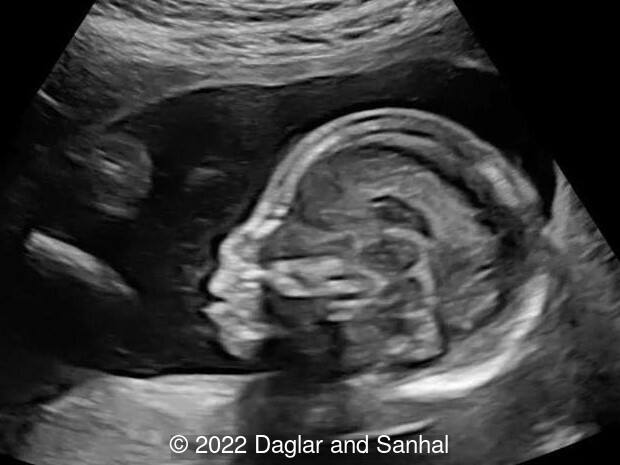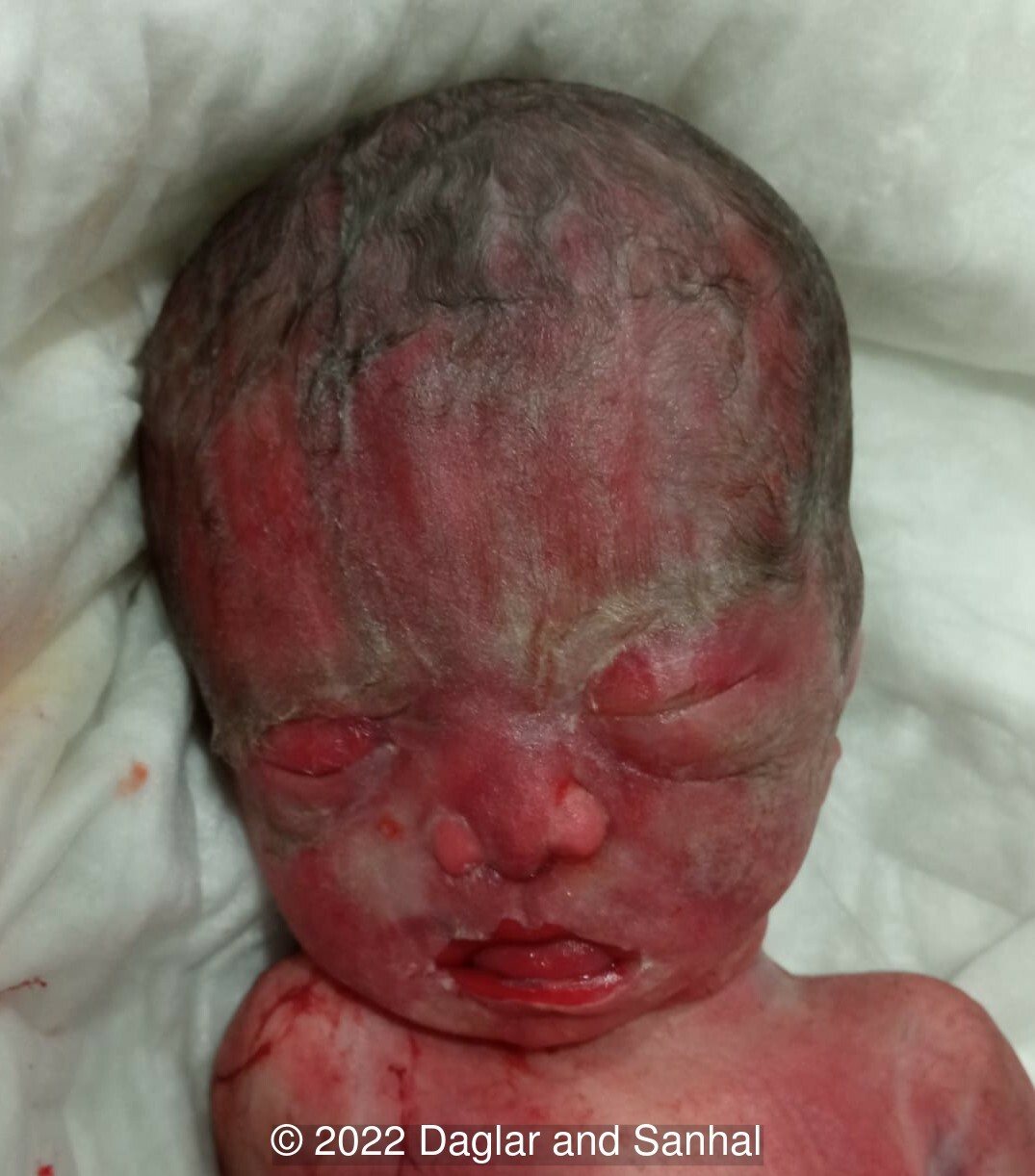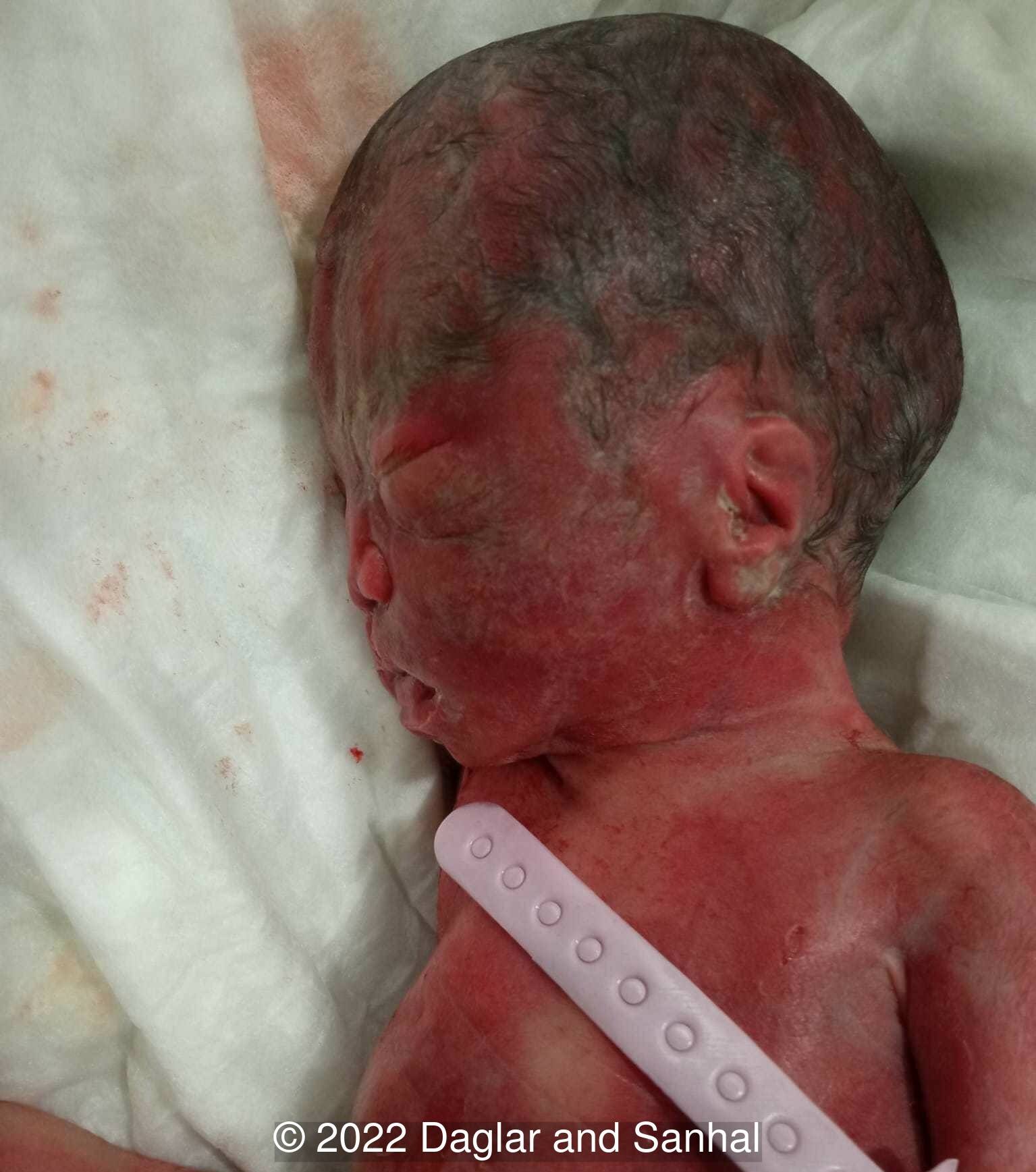Case of the Week #571
(1) Mersin Private Clinic; (2) Akdeniz University Department of Perinatology


View the Answer Hide the Answer
Answer
We present a case of Koolen De Vries Syndrome (OMIM #3610443) (deletion 17q21.31), which was found with microarray analysis. After counselling, the couple chose to terminate the pregnancy.
Image 1 and Video 1: Short - dysplastic corpus callosum with abnormal fetal profile (Binder phenotype like).
Image 2 and Video 2: Aberrant right subclavian artery.


Discussion
Koolen-de Vries syndrome (MIM#610443) is a rare microdeletion syndrome involving the 17q21.31 region, which was first described by Koolen and de Vries in 2006. Its incidence has been estimated at 1:16,000 in the general population [1]. This syndrome is characterised by developmental delay, intellectual disability, hypotonia, epilepsy, characteristic facial features, and congenital malformations in multiple organ systems [2].
Fetuses with Koolen-de Vries syndrome may present with the following:
- Intrauterine growth retardation (26%)
- Central nervous system defects (53%) including corpus callosum hypoplasia/aplasia, enlarged ventricles, hydrocephalus, and heterotopias
- Facial dysmorphism (80%)
- Cardiac abnormalities (39%) including atrial septal defect, ventricular septal defect, hypoplastic aortic valve, bicuspid aortic valve, common left pulmonary vein, dysplastic pulmonary valve, dilated left ventricle, or anomalous right subclavian artery
- Urogenital anomalies (45%) [3]
Developmental delay, behavioral problems and intellectual disability cause postnatal disability. It was reported that all individuals with Koolen-de Vries syndrome have developmental delay and intellectual disability. The level of intellectual disability was mild in 42%, moderate in 37% and severe in 22% [3].
References
[1] Koolen DA, Kramer JM, Kornelia Neveling K,et al. Mutations in the chromatin modifier gene KANSL1 cause the 17q21.31 microdeletion syndrome. Nat Genet. 2012 Apr 29;44(6):639-41.
[2] Shaw-Smith C, Pittman AM, Willatt L et al. Microdeletion encompassing MAPT at chromosome 17q21.3 is associated with developmental delay and learning disability. Nat Genet 2006; 38: 1032–1037.
[3] Koolen DA, Pfundt R, Linda K, et al. The Koolen-de Vries syndrome: a phenotypic comparison of patients with a 17q21.31 microdeletion versus a KANSL1 sequence variant. Eur J Hum Genet. 2016 May;24(5):652-9.